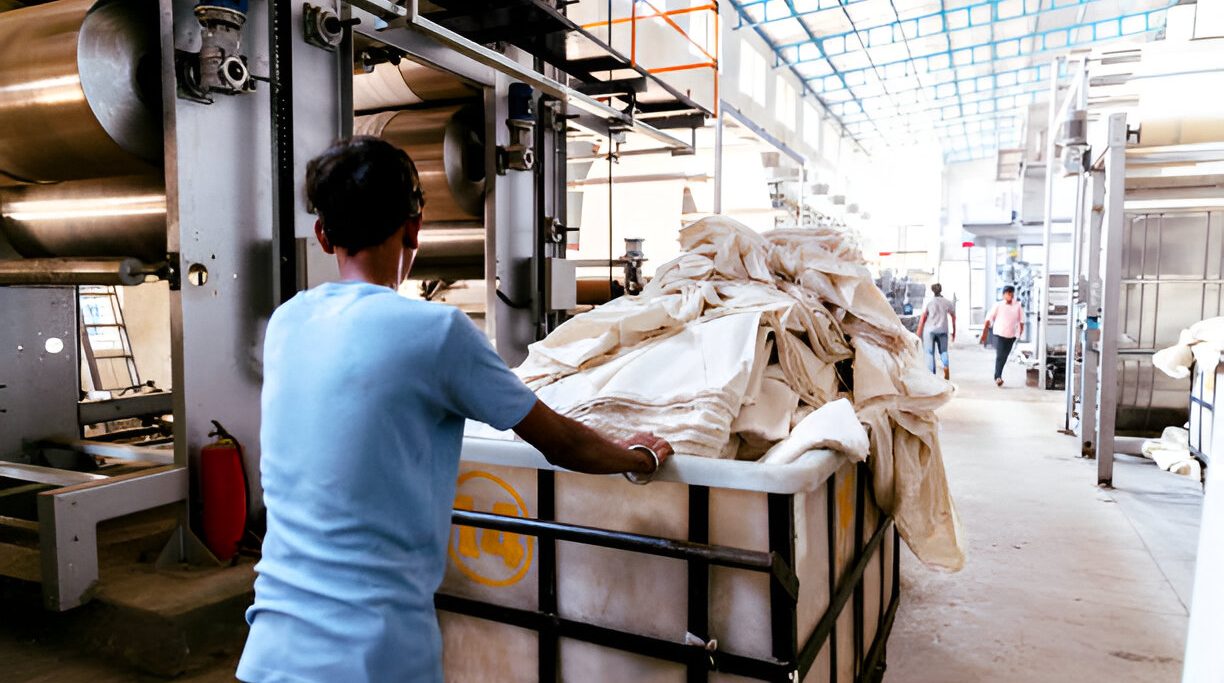The textile industry, like any other, needs standardisation and uniformity and so increasingly there is a demand for certification in the industry. The textile business is a dynamic sector that includes a variety of products, such as clothes, bedding, upholstery, and much more. It is crucial to make sure that every product complies with the highest quality and safety standards given the wide variety of products that are created. In this regard, fabric testing and certification are essential since they guarantee that the finished product complies with the necessary requirements and industry standards.
Fabric Testing
Fabric testing is the process of analysing a fabric’s characteristics and performance to make sure it complies with the necessary criteria. By putting the fabric through a series of tests to evaluate its various physical and chemical qualities, this is accomplished. The most typical tests include:
- Strength Testing: Strength testing measures the force required to break or tear the fabric. This test is essential for ensuring that the fabric is strong enough to withstand repeated use and exposure to various elements.
- Tensile Strength Testing: This test measures the force required to pull a fabric apart and is used to evaluate the fabric’s strength and durability.
- Tear Strength Testing: This test measures the force required to tear a fabric and is used to evaluate the fabric’s resistance to tearing.
- Bursting Strength Testing: This test measures the pressure required to burst a fabric and is used to evaluate the fabric’s ability to withstand pressure and stress.
- Abrasion Resistance Testing: This test measures the fabric’s ability to withstand friction and wear and is used to evaluate the fabric’s durability.
- Pilling Resistance Testing: This test measures the fabric’s resistance to forming pills, or small balls of fibres, on the surface of the fabric and is used to evaluate the fabric’s appearance and texture.
- Moisture Regain Testing: This test measures the amount of moisture that a fabric can absorb and is used to evaluate the fabric’s ability to retain moisture and its overall comfort.
- Durability Testing: Durability testing checks the fabric’s ability to withstand repeated washing, wearing, and exposure to sunlight, among other things. This test helps to ensure that the fabric will last for a long time and retain its appearance even after repeated use.
- Colour Fastness Testing: Colour-fastness testing measures the fabric’s ability to retain its colour after exposure to light, washing, and rubbing. This test is essential for ensuring that the fabric will not fade or bleed and that the colours will remain vibrant and true to life.
- Flammability Testing: Flammability testing assesses the fabric’s resistance to ignition and the rate at which it burns. This test is particularly important for products that will be used in public spaces, such as upholstery or curtains, as it helps to ensure that they are safe and will not pose a fire hazard.
- Shrinkage testing
The process of shrinkage is when a fabric gets smaller in size, frequently as a result of washing or drying. As a result, there may be irregularities in the finished product, such as misaligned patterns or poor fit, which can be problematic for textile makers. Manufacturers test fabrics for shrinking to ensure that it won’t occur. When a fabric sample is being tested for shrinkage, its measurements are measured both before and after washing or drying. The cloth is assessed according to its degree of shrinkage once the size change has been computed. ISO 5077 and AATCC 135 are the two standards for shrinkage testing that are most frequently applied.
Print Testing:
To assess the calibre and robustness of prints on textile textiles, print testing is used. It makes it more likely that the prints won’t deteriorate over time and fade, peel, or otherwise change.
In print testing, the printed cloth is often subjected to various environmental conditions, such as light, heat, and abrasion, and the ensuing changes are measured. The fabric is then assessed according to how well it keeps its appearance and vitality. There are other print tests, such as the light fastness test, which gauges how well a fabric will hold up to exposure to light, and the rub test, which gauges how well a fabric will hold up to abrasion.
Certification
Certification provides assurance that the fabric meets specified industry standards and regulations.
Some of the most common certifications include:
- Oeko-Tex Standard 100: This certification ensures that the fabric is free of harmful chemicals and substances, such as lead and formaldehyde. This is essential for protecting consumer health and the environment, as well as ensuring that the final product is safe for use.
- Global Organic Textile Standard (GOTS): This certification verifies that the fabric is made from organic fibres and is produced in an environmentally and socially responsible manner. This certification helps to ensure that the fabric is produced in a sustainable manner, without compromising on quality or safety.
- Blue-sign: This certification assesses the entire production chain and ensures that the fabric is produced in a sustainable manner, without compromising on health and safety. This certification is essential for ensuring that the fabric is produced in an environmentally responsible manner and that the final product is of the highest quality.
- REACH (Registration, Evaluation, Authorization, and Restriction of Chemicals): This is a European Union regulation that ensures that chemicals used in the production of textiles are safe for human health and the environment.
- The Organic Materials Review Institute (OMRI): This certification verifies that the fabric is made from organic fibres and meets the USDA National Organic Program standards.
Why Have Fabric Testing and Certification in the Textile Industry
- Cost-Effective: Fabric testing and certification can actually save textile manufacturers money in the long run. By identifying potential problems with the fabric before it is used in the final product, manufacturers can avoid costly recalls and reputation damage. Additionally, certifications can help to differentiate the manufacturer’s products from others, potentially increasing sales and profits.
- Compliance with Regulations: The textile industry is heavily regulated, and failure to comply with regulations can result in significant fines and legal consequences. Fabric testing and certification help manufacturers to ensure that their products meet all relevant regulations and standards, such as those related to flammability, environmental sustainability, and consumer safety.
- Improved Quality: By testing and certifying their fabrics, manufacturers can ensure that they are using high-quality materials and producing products that meet their customers’ expectations. This can lead to improved customer satisfaction, increased brand loyalty, and repeat business.
- Increased Sustainability: Many certifications, such as GOTS, assess the environmental impact of textile production and help to ensure that it is sustainable. By certifying their products, manufacturers can demonstrate their commitment to sustainability and the environment, which is becoming increasingly important to consumers. GOTS (Global Organic Textile Standard) is a globally recognized certification for organic textiles, including clothing, home textiles, and personal care products. The standard was established in 2002 and is considered to be the leading processing standard for textiles made from organic fibres.The GOTS certification covers the entire production process of a textile, from the sourcing of the raw materials to the final product. To be certified under GOTS, the textile must be made from at least 70% organic fibres, such as
organic cotton, linen, or wool, and must meet strict environmental and social criteria throughout the production process.The GOTS certification verifies that the textile was produced in an environmentally responsible manner, without the use of harmful chemicals and synthetic fertilizers. It also ensures that fair labour practices were used throughout the production process and that workers were treated with dignity and respect.The GOTS certification provides consumers with assurance that the products they are purchasing are environmentally friendly and ethically produced. It also helps manufacturers to differentiate their products from conventional textiles, and to demonstrate their commitment to sustainability and social responsibility.
- Increased Trust and Credibility: Fabric testing and certification help to demonstrate the manufacturer’s commitment to producing high-quality, safe, and sustainable products. This can increase consumer trust and credibility, and ultimately lead to increased sales and brand recognition.
In conclusion, fabric testing and certification play a crucial role in the textile industry. By ensuring that the fabric meets the required standards, manufacturers can produce high quality, safe, and sustainable products that meet the needs and expectations of their customers. Additionally, certification helps to enhance the reputation and credibility of the manufacturer, and ultimately contributes to customer satisfaction and confidence.
As a company that performs fabric testing in our factory, Cotton Monk understands the importance of ensuring the quality, safety, and sustainability of our textiles. Our comprehensive and rigorous testing program helps us identify any potential issues before they become major problems, leading to improved efficiency, reduced waste, and increased customer satisfaction.



